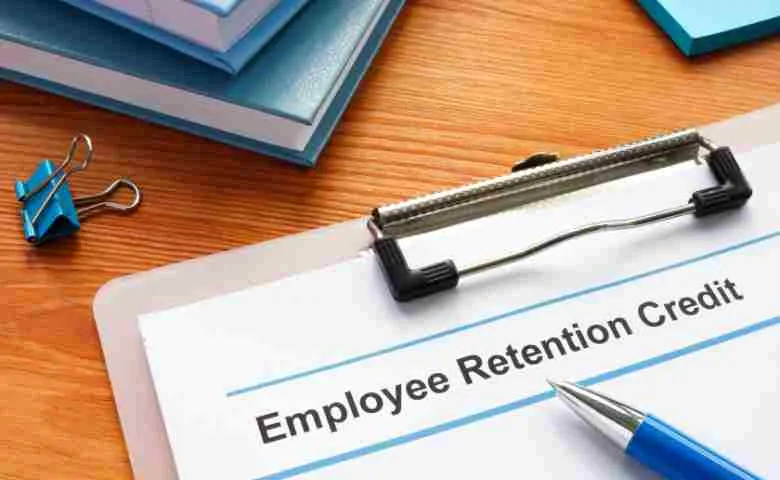Last Updated on May 12, 2025 by Admin
Navigating the choppy waters of today’s business world, you might get stressed by financial challenges brought on by the COVID-19 pandemic. Fortunately, measures such as the employee retention credit (ERC) are in place to help alleviate some of these burdens.
This beneficial program rewards eligible employers for keeping their staff on the payroll during periods of economic uncertainty. Read on to learn how you can leverage this program to support your business during these testing times, even if you still haven’t claimed ERC in 2025.
Table of Contents
How Does the Employee Retention Credit Work?
The employee retention credit (ERC) is a U.S. federal government initiative. Introduced under the CARES Act in response to the COVID-19 pandemic, this refundable tax credit aims to help businesses retain their staff amid challenging economic conditions.
Essentially, eligible employers can reduce their employment taxes by claiming a credit on qualified wages paid to employees, thereby ensuring continued payroll activity. If you’re an employer facing financial hardship due to disruptions of the pandemic, understanding the ERC and how it applies to your business may play a crucial role in your recovery strategy.
Related Posts:
- How Much Should You Pay Employees? A Basic Guide
- How to Start a Construction Startup in 2025: A Comprehensive Guide
- All You want to know about Construction Equipment Financing
- Slipped and Fell on a Construction Site? Here’s How to Recover — and How to Take Legal Action if Necessary
- Top Business skills for startups
How to Calculate the Employee Retention Credit
Calculating and claiming the employee retention credit might seem complex at first glance due to its numerous factors and variables, but it’s pretty straightforward. Basically, it’s a percentage of up to 70% on the first $10,000 of qualified wages paid to an employee per quarter in 2020.
So, for example, if you have a qualifying employee whose wages are equal to or more than $10,000 in one quarter, your maximum credit amount would be $7,000 for that particular quarter.
Keep in mind that if you had less than 100 employees on average during 2019, you can treat the wages paid to all your employees as qualified in 2020. If you Have more than 100 employees, only the wages you paid to staff not providing services qualify for the ERC that year.
While the maximum number increased to 500 in 2021, you still have to base it on your 2019 staff count. You’ll also need to add your group health plan expenses when calculating wages paid to your employees, which includes your portion of costs and pre-tax salary reductions.
How to Calculate the ERC as a Recovery Startup Business
As a recovery startup business (i.e., a company that started during the pandemic), calculating your potential employee retention credit (ERC) offers its own unique conditions. As part of the American Rescue Plan Act, businesses that began operating after February 15, 2020, might qualify for this tax credit without having to meet standard eligibility requirements.
If you average less than $1 million in annual gross receipts and fail both economic hardship tests in at least the third quarter of 2021, you could qualify for ERC. You can claim 70% of the first $10,000 qualified wages paid to each employee in the third and fourth quarters of 2021.
Recovery startups are allowed to claim credit for wages paid after September 30th, 2021.
The ERC could amount to up to $50,000 per quarter, based on a percentage of your payroll costs. With an in-depth understanding of these provisions and careful calculations, you could leverage this opportunity to secure funds to assist your business during development.
How to Apply For the Employee Retention Credit
Applying for the employee retention credit requires detailed understanding and thorough documentation. To proceed, you will initially need to determine your eligibility based on your business’s economic indicators or COVID-19-related disruptions.
Eligible employers can apply for this credit by reporting total eligible wages on their federal employment tax returns. Bear in mind that it’s absolutely crucial to organize accurate payroll records and confirm adherence to all ERC guidelines. If circumstances permit, consulting with a tax professional would provide invaluable guidance throughout the application process.
While it’s too late to earn the ERC, you can still retroactively claim the credit by filing Form 941-X with the IRS. The deadline is April 15th, 2025, for 2020 and April 15th, 2025, for 2021.
In Conclusion…
In this unpredictable business climate, the employee retention credit offers a lifeline to keep your team intact and operations running. Grasping its potential benefits and understanding whether you’re eligible can be critical to sustaining your business during challenging times.
Related Posts:
- Improving Construction Schedule By Hiring Construction Scheduling Consultant
- What are the benefits and drawbacks of working for a startup vs a well-established company in the engineering sector?


